
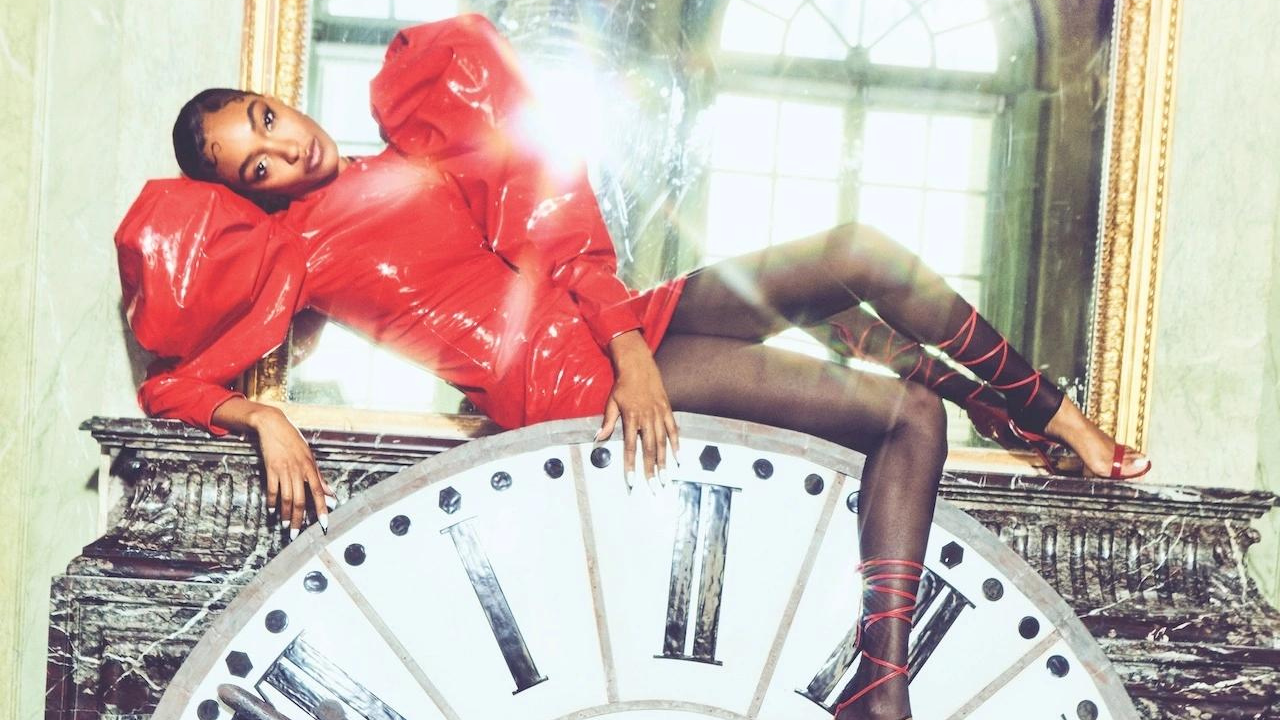
All products featured on GRAZIA are independently selected by our editors. However, when you buy something through our retail links, GRAZIA may earn an affiliate commission.
Picture this Parisian mise-en-scène. Perched atop a mirrored table laden with delicate macarons and ornately decorated confections, British supermodel, actress and activist Jourdan Dunn coquettishly throws a handful of cake at the camera. Iconic photographer Ellen von Unwerth waltzes around the 19th-century, chandelier- strewn surroundings of La Galerie Bourbon with a startlingly realistic replica hare as her unlikely dance partner. A giant clock rests against an antique fireplace, keeping a watchful eye over the proceedings, and a super-sized game of chess is in progress on the checkerboard floor. This can only be GRAZIA’s Mad Hatter’s Tea Party celebrating the color, joy and surrealism of the season by way of the most fanciful creations the fashion world has imagined, and everyone’s invited…
ADVENTURES IN WONDERLAND
Jourdan Dunn’s journey from Primark-to-Prada is something of a modern-day fairytale. She was scouted by Storm Model Management in 2006 in London’s Hammersmith outpost of the fast-fashion emporium before becoming the first model of color to walk for Miuccia Prada in over a decade and winning the British Fashion Award for Model of the Year in 2008. Yet despite her accolades and achievements, her biggest pinch-me moments are far more modest.
“Do you know what? It’s still seeing my face in a magazine or on a billboard,” Dunn admits. “People say to me, ‘Jourdan I’ve seen you on the tube or on the bus or in Selfridges or in the airport.’ Even when I walk down my local high street and I’m just being Low-Key J and I see myself, I still think, ‘Oh yeah, that’s me.’”
Wait a minute, who’s Low-Key J? “I have my moments when I’m just in my tracksuit and I just want to try to be low key,” laughs the model and mother of 12-year-old Riley. “My son says, ‘Mum, of course people are going to still recognize you. That’s not a disguise, mum. That’s not low key!’ But yeah, Low- Key J is just no makeup, sunglasses, and just very, very chilled.” Dunn is now at the stage in her career where she can pursue the projects that truly resonate with her. “Everyone has a choice, it’s either yes or no. I really prioritize what is important to me. So just because something comes up, I don’t feel pressure to go places just because I was invited or to take that job or do that show. I just do everything with intention, with purpose and what feels right to me and authentic to me.”
Take the GRAZIA cover shoot, for example. “It was so much fun!” she recalls. “When I saw the concept of Alice in Wonderland, I knew I was going to be living a childhood fantasy. On set, there were cakes everywhere! I just love it when the team is creative, when there’s a theme from the glam references to the props on set. For one scene, I was laughing like a villain, then having a food fight – actually getting messy and being creative. Everything was magical. It’s wonder, it’s mystery, so automatically you’re going to feel that you want to bring it alive.”
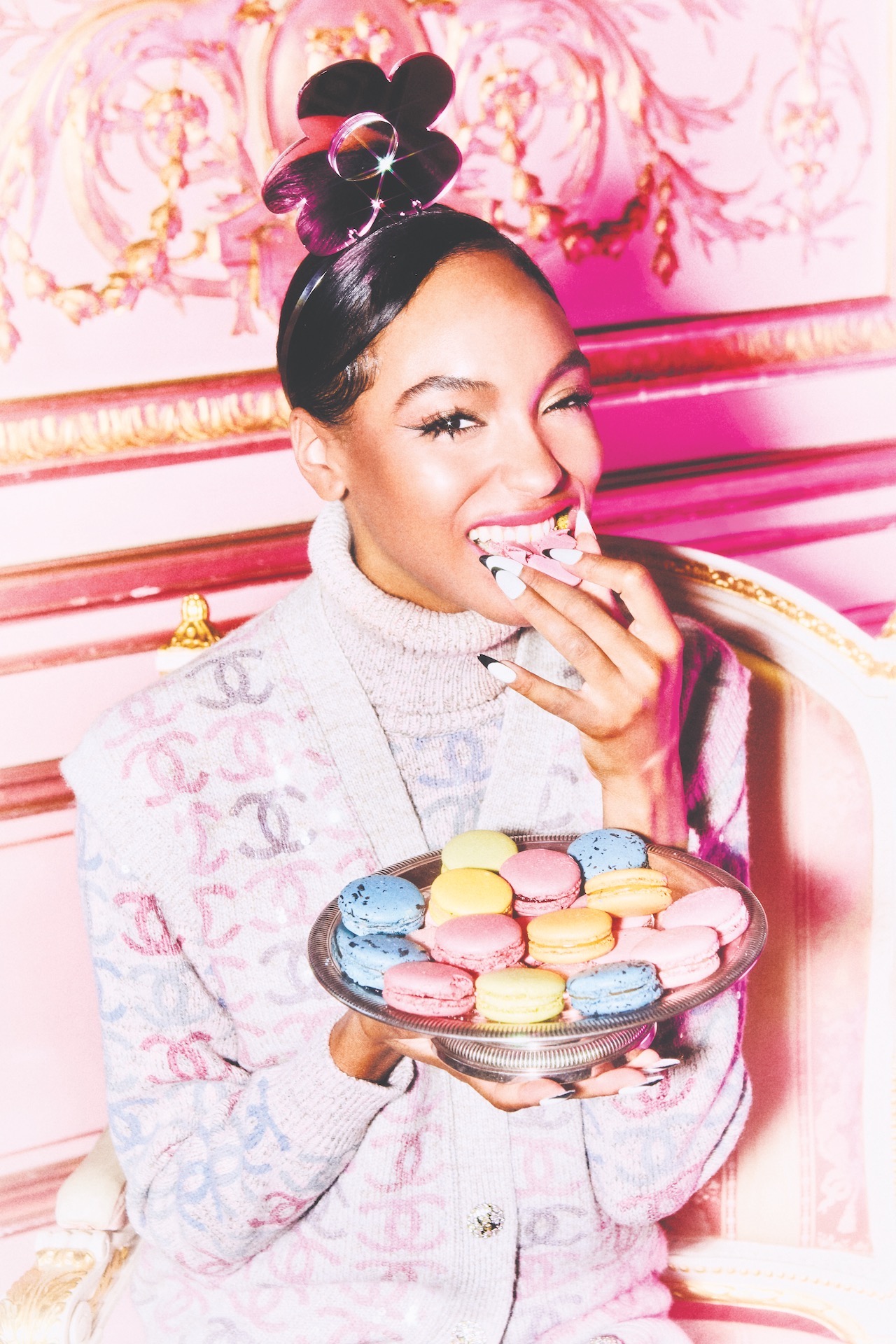
DOWN THE REPRESENTATION RABBIT HOLE
Like so many trailblazers before her, Dunn found herself on a path that she says she felt she often had to walk alone. At the start of her career, the model cites a sense of having to compete against other models of color.
“I did see other models — there was Joan Smalls and Chanel Iman but the industry kind of separated us,” notes Dunn. “Sometimes if it wasn’t going to be me doing a show, it would definitely be Chanel. So, in one sense, I wasn’t alone because I used to see the girl, but the fashion world created this rivalry or allowed this tension between us when it really wasn’t necessary at all. So that in another sense, yes, I did feel alone.” “In my first season, I remember Chanel came up to me and she was so sweet. But [the dynamic between us] started to change once I began doing shows because people were in her ear and in my ear. So we just had a conversation. We agreed, ‘Girl, this is silly. What are we actually doing?’ We said, ‘We actually like each other. Why are we listening to outsiders and why are we breathing energy into this when there’s no beef?’” she continues. “There’s room for everybody, not just one.”
Today, Dunn sits in a better place and doesn’t look at others’ success as a reflection of her own. “I don’t think, ‘Why not me?’ I genuinely believe when one door closes, another one opens,” she says. “That has happened throughout my career. And I think it’s important that you stay focused on what you’re doing. Like in life in general, comparing yourself to others is never a good idea. You never know what their journey is or how they had to get there.”
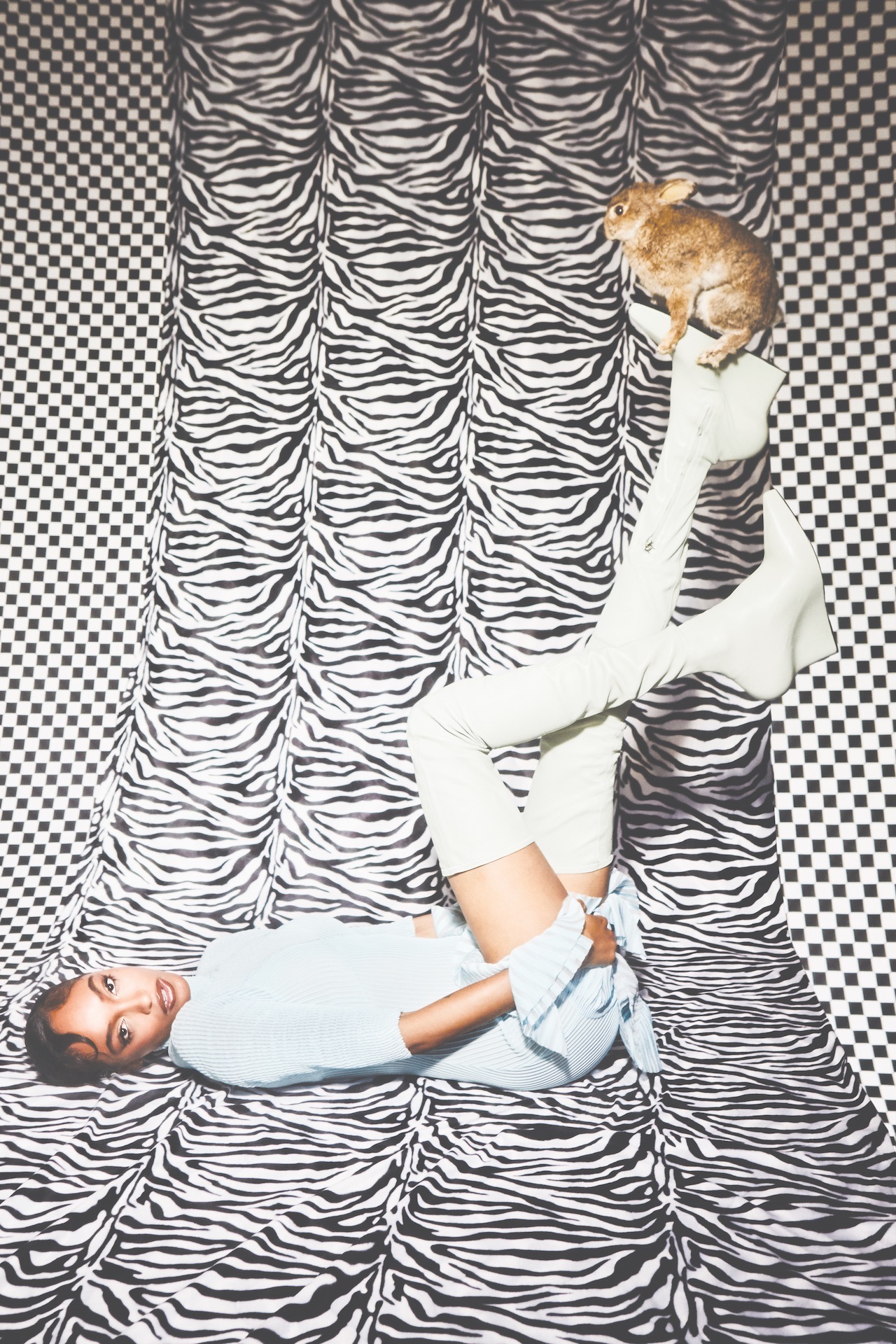
According to Dunn, this shift came about thanks to the supportive spirit of social media. “If someone does a cover or a campaign, others are reposting and commenting and everyone’s championing each other,” she says. “It really does feel like a sisterhood. And when we go to shows or on set, there’s more of us now. It’s hard to be standoffish or have that kind of tension. It used to be very cliquey, but because of social media, the girls have come together now and it’s not, you know, the Russians or the Black models, it’s just everybody supporting everybody, which is beautiful to see.” With the rapid rise in representation, there’s no question that brands are being more diverse in their casting, but does it feel authentic to Dunn, and does this matter? “I think at this point, it’s just beautiful to see that I’m not just counting one model of a color. There’s 10 or more and also different shades, and models wearing braids. I love that. Does it feel like it’s a bit forced sometimes? Yes. And maybe in time, it’s just going to be the norm, because if it wasn’t going to be forced, we wouldn’t be having this conversation,” she sighs. “I feel like it’s going to take some time until it’s not going to be a thing where I’m going to be talking about it. It’s just going to be normal.”
For change to be permanent and not performative, she believes that diversity needs to start in the design room with a wider inclusion of cultures in the roles that matter. “We’re seeing a lot more designers of color now. That’s also the problem. It’s not just about on the runway, it’s the editorial, and behind the scenes. We’re not fully there, but we’re definitely making really big strides.”
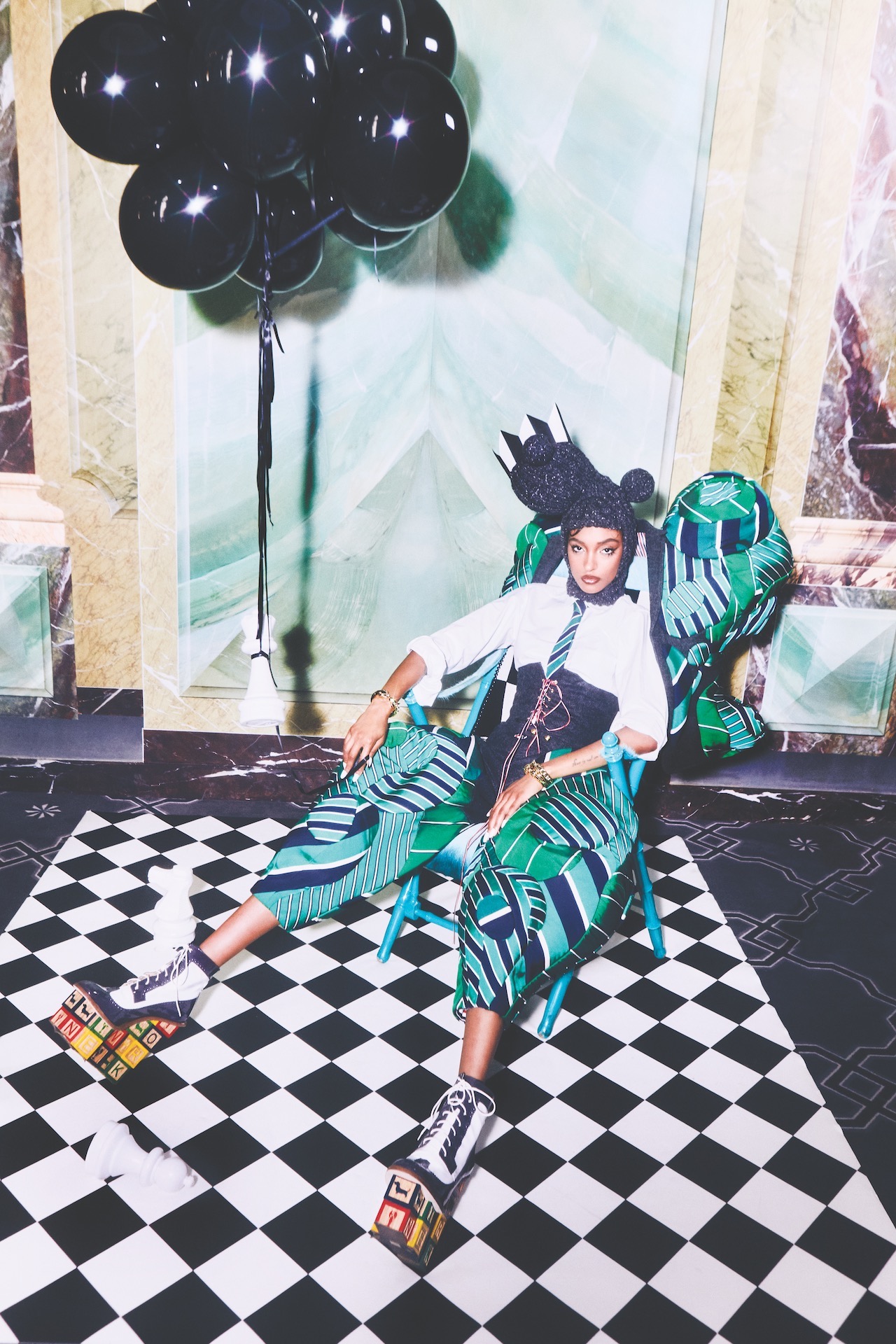
THROUGH THE LOOKING GLASS
Reflecting on her years in the industry, Dunn’s words of wisdom to the next generation would be to look after yourself. “You don’t need validation from others. You validate yourself. You love yourself. You trust yourself. I think that’s very, very important,” she says.
“It’s hard especially when you’re a young model and you’re maybe from a different country, or you don’t speak the language. You might have responsibilities at home, and then you’re putting your trust in other people when it comes to your career and your life. I think it’s really good that people are learning the power of saying no. Creating boundaries even in a workplace is very, very important.”
But her own self-love manifesto goes far beyond repeating a morning mantra. “For me, it starts with going to bed listening to affirmation music, then waking up at 5 a.m., meditating, reading, and journaling. I surround myself with crystals and, every time I travel, I take sage. That keeps me grounded.”
It’s her intuition that continues to serve her well. “If I feel any tension, I take a moment to acknowledge it, go outside, and breathe. And even if I’m in the middle of my hair and makeup, if I feel a certain way, I would just honor my body, honor myself, and do that,” she says. “Because I’ve always noticed whenever I don’t do that, I regret it and I have a breakdown or experience anxiety. For me, it’s just really listening to my body, taking the time, not rushing, not people pleasing, and setting healthy boundaries.”
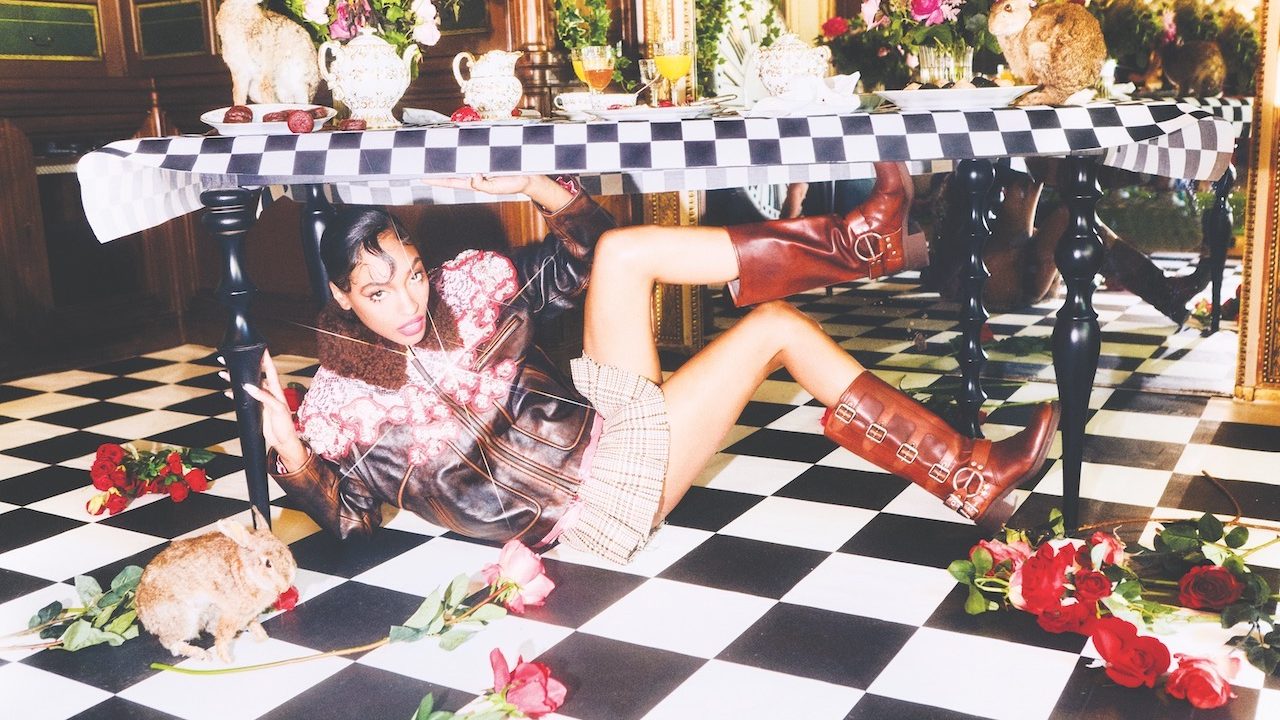
“Boundaries is a new thing for me. I realized that I didn’t know what boundaries really were,” she adds. “Putting those in place with family, friends and work is very important.”
Dunn also credits her son Riley for teaching her patience and the concept of unconditional love. “That’s the one relationship I’ve been in where I love him regardless,” she says. And at the age of 12, Riley is beginning to realize what an empowering role model his mother really is. “Recently he said to me, ‘Mum, I’m so proud of you. You bought this house for us, you do this for us. I’m proud of you,’” she says. “He gets it. He lets me know that he’s proud of me all the time and that he’s very appreciative of everything, so that fills my heart with joy because I do it for him, for us. So for him to acknowledge it, that fills me up.”
THE OTHER SIDE OF THE MIRROR
With little left to achieve in the modeling world, Dunn enrolled in London’s Identity School of Acting, a company which counts John Boyega among its alumni. “It was the most humbling experience for me because I was always told that I have a natural, raw talent [for acting] so I thought, ‘I’m going to just like breeze through this, I got this!’” Dunn recalls.
“They put me in the advanced level, and when my end-of- the-term performance was graded, I actually dropped down. I went down to intermediate while others either stayed the same or went higher. Then my ego started to come into play. ‘That person over me?’ I really started to question everything. And then that’s when I had to stop. I saw what I was doing, and I told myself, ‘No, I’m comparing someone else’s journey to my journey.’ And when I really looked at it and asked myself, ‘Jourdan, can you honestly say that you were putting in 100 percent? Would you turn up every week knowing what you were supposed to be doing? Were you doing the homework, were you practicing the lines for two days or on the day?’ These are all the things that when I had to break it down, I realized no wonder they chose that person because they were putting in the work and you can’t charm your way through it and look pretty. You really can’t fake it. It was a humbling lesson.”
During the process, Dunn discovered her supermodel muscle memory wasn’t an advantage at all. “It’s so different because I realize as a model we’re so aware of our angle, of our face. When you’re acting, you have to just let go and not be so aware. You can’t be scared to do an ugly cry or look stupid. You just have to let go. It can help in some ways, but no, I had to unlearn some things.”
Along with her ambassadorship for Sickle Cell Disease Association of America — a condition that affects her son Riley — and fronting campaigns to promote Black Love, Dunn’s career pivot from modeling to acting feels part of a conscious effort to rewrite the script and amplify her voice on behalf of her communities.
“I think if anyone has a platform, it’s a gift. So I do believe my gift is to speak on matters like sickle cell and Black Love, and I feel if I were to not say anything, it’s a slap in the face to the universe. It’s actually a privilege, and not everybody is able to do that. I’ve always been quite insecure about speaking, but now as I’m older, that concept to me of using my voice is a gift. Speaking and getting a message across is a blessing.” Finally, the fairy tale ending we all deserve.
Read GRAZIA Gazette: Aspen featuring cover star Jourdan Dunn:













